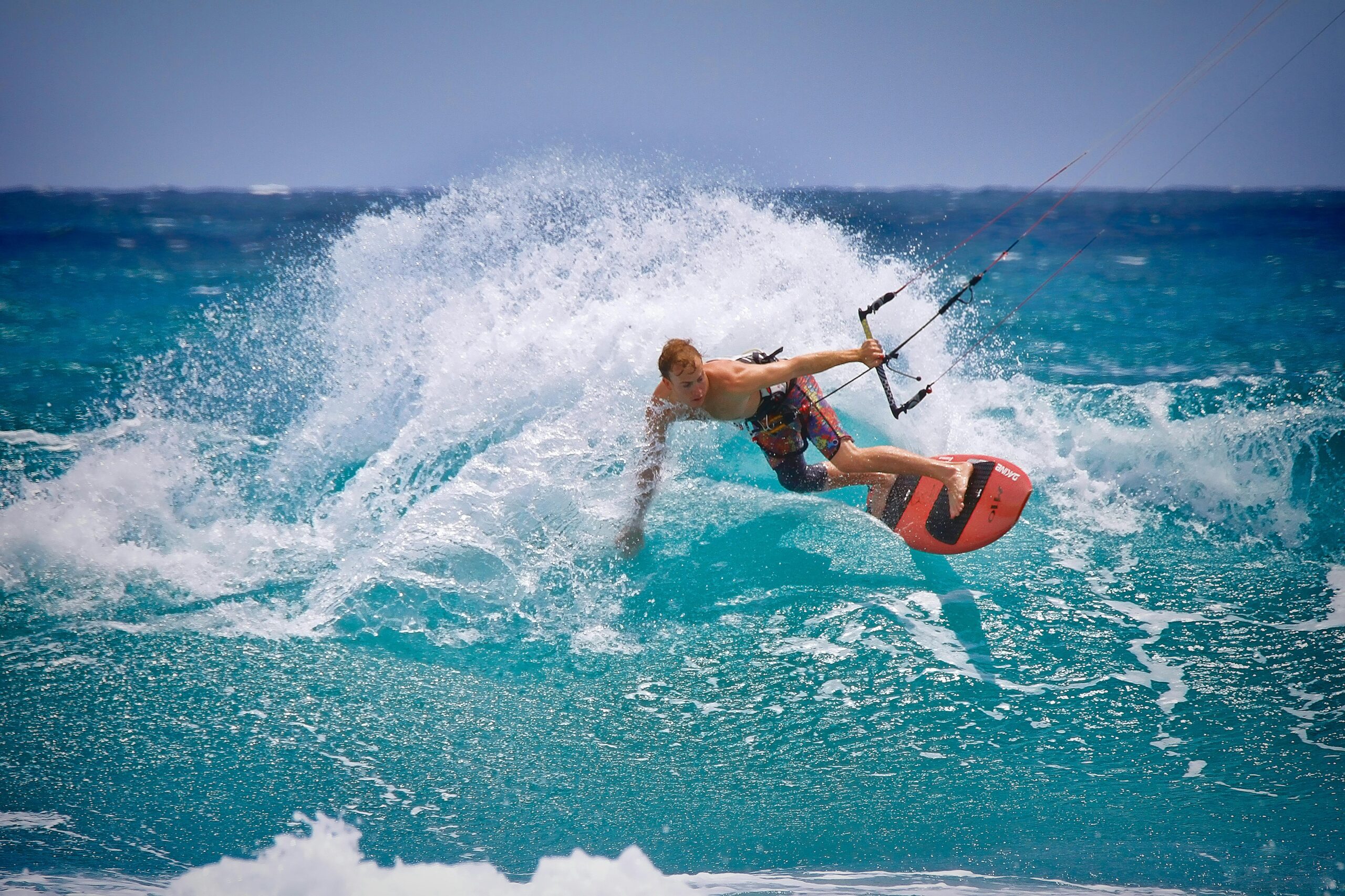When it comes to selecting the perfect kite for your kitesurfing expeditions, weighing the specific advantages and limitations of the kites you’re considering is crucial. In this article, we’ll explore the Naish Slash and Naish Pivot with current insights, focusing on their fundamental differences, wind performance, and versatility. If you’re a committed wave rider or seeking an all-rounder kite in 2023, this article will support you in making the optimal decision.
Comparison Overview: Naish Slash vs Pivot
This section provides a roundup of what differentiates the Naish Slash from the Naish Pivot and the riders these kites cater to.
Key Comparison Table
| Feature | Naish Slash | Naish Pivot |
| Primary Focus | Wave riding | All-around performance |
| Turning Speed | Quick and responsive | Agile, but less wave-specific |
| Drift and Stability | Excellent for wave riding | Good, yet not wave-centric |
| Boosting Power | Somewhat restricted | High |
| Wind Range | Moderate | Wide |
| Skill Level Required | Intermediate to Advanced | Beginners to Advanced |
Let’s delve deeper into each kite’s strengths to ascertain which best suits your unique needs.
Naish Slash: Targeted Performance for Wave Riders
The Naish Slash is a kite specifically crafted for wave enthusiasts who seek precision and control in wave riding. The uniqueness of the Slash lies in its design and targeted performance.
Strengths of the Naish Slash
- Wave-Specific Features: Optimal positioning in the wind window thanks to its forward flying position and exceptional drift capabilities for clean riding in onshore and sideshore winds.
- Quick and Sharp Turns: Its swift turning and responsive nature cater to riders who prioritize manoeuvrability.
- Bar Pressure and Depower: Light bar pressure coupled with excellent depower promotes control in unpredictable wave scenarios.
- Design: Three-strut, boxy kite specifically for wave riding.
Limitations of the Naish Slash
- Limited versatility making it less appealing for freeride or big-air fanatics.
- The kite’s wave-centric performance requires advanced riding skills.
If your priority encompasses wave performance with freeride and boost capabilities, the Naish Pivot presents an enticing alternative.
Naish Pivot: Versatile All-Terrain Performer
For riders seeking flexibility, the Naish Pivot delivers impressive all-round capabilities without sacrificing too much wave performance. Here’s what sets the Pivot apart:
Strengths of the Naish Pivot
- Versatility Across Conditions: Equally adept at wave riding, freeride sessions, and boosting big air.
- Powerful Boosting Ability: Ideal for riders who enjoy jumping or pulling air tricks.
- Wide Wind Range: Extended sheeting throw enables exceptional control across a broader range of winds.
- User-Friendly: Intuitive bar feedback and instant depower make it accessible to intermediate riders.
- Design: Three-strut kite with a swept profile for enhanced versatility.
Limitations of the Naish Pivot
- Lacks the specialized wave performance (drift and precision) of the Slash.
- Its versatility comes with a premium price tag, which may deter budget-conscious riders.
To put their performances into perspective, let’s directly compare these two kites across key performance metrics.
Head-to-Head Comparison: Naish Slash vs Pivot
1. Wave Performance: Winner – Naish Slash
- The Slash excels in wave riding with swift spins, precise turns, and superior drift.
- The Pivot delivers reasonable wave handling but lacks the Slash’s wave-specific finesse.
2. Versatility: Winner – Naish Pivot
- The Pivot’s multi-discipline performance makes it a first choice for freeride fanatics and big-air enthusiasts.
3. Wind Range: Winner – Naish Pivot
- Its wide wind range allows more frequent sessions across varying conditions.
4. Build & Materials: Tie
- Both kites are built with Naish’s durable Quad-Tex canopy material and Octopus inflation system.
As newer models are released, it’s worth considering the updates that could further enhance these kites.
New Model Updates: What to Expect For the Naish Slash
- Potential enhancements to its drifting capabilities for even smoother wave transitions.
- Stability tweaks to handle larger and choppier surf conditions.
For the Naish Pivot
- Broader wind range to solidify its dominance as a freeriding kite.
- Sharper depower mechanisms for better freestyle adaptability.
Now that we’ve compared these kites in depth, here’s how to choose the one that suits your style.
Choosing the Right Kite: Slash or Pivot?
Opt for the Naish Slash if:
- You’re primarily a wave rider seeking exceptional drift and control.
- You kite in onshore or sideshore winds, where maneuverability is crucial.
- You value precision over versatility.
Go with the Naish Pivot if:
- You prefer a multi-purpose kite capable of wave, freeride, and boosting.
- You’re keen on jumping potential in addition to solid wave performance.
- You frequently encounter variable wind conditions or desire a single-kite solution for all scenarios.
Still undecided between these two options? Here are some alternative kites to consider.
Alternatives to Naish Slash and Pivot
For Wave Riding:
- North Neo
- Exceptional drift with razor-sharp control.
- Ideal for smaller wave conditions.
- Cabrinha Drifter
- Renowned for its sideshore wave performance.
- Delivers stability in gusty conditions.
For Versatility:
Duotone Dice
- Similar to the Pivot, yet with slightly more wave-focused attributes.
- Ideal for freeriders wishing to engage in occasional wave sessions.
Final Thoughts: Which Kite Should You Choose?
Your choice between the Naish Slash and the Naish Pivot mainly depends on your unique priorities:
- If you’re a wave-centric rider, the Slash provides unparalleled performance in this niche.
- If you’re a rider seeking versatility, jumping ability, and freeride agility, the Pivot delivers a more multitalented inclination.
Regardless of your preference, both kites maintain Naish’s reputation for quality and performance. Your ultimate decision depends on how you kite, where you kite, and what type of progression you seek. Happy kiting!
